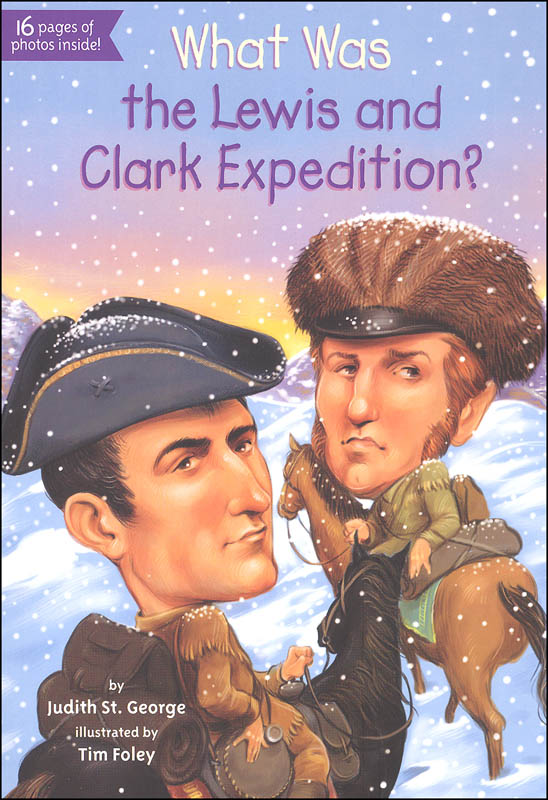
He did not attempt to make a secret of the Lewis and Clark expedition from Spanish, French, and British officials, but rather claimed different reasons for the venture. Two years into his presidency, Jefferson asked Congress to fund an expedition through the Louisiana territory to the Pacific Ocean. Medical and surgical supplies, mosquito netting and oilskin bags.
#LEWIS AND CLARK CORPS OF DISCOVERY PB PORTABLE#
Among the purchased items were found 193 pounds of portable soup, 130 rolls of pigtail tobacco, 30 gallons of strong spirit of wine, a wide assortment of Indian presents, At Philadelphia, Israel Whelan, the purveyor of public supplies, purchased supplies for the expedition after a list provided by Lewis. Mackenzie's accounts in Voyages from Montreal (1801) informed Jefferson of Britain's intent to establish control over the lucrative fur trade of the Columbia River and convinced him of the importance of securing the territory as soon as possible. Mackenzie and his party were the first to cross America north of Mexico, reaching the Pacific coast in British Columbia in 1793–a dozen years before Lewis and Clark. Alexander Mackenzie had already charted a route in his quest for the Pacific, following Canada's Mackenzie River to the Arctic Ocean in 1789. Like Captain Cook, he wished to discover a practical route through the Northwest to the Pacific coast. Jefferson had also read Captain James Cook's A Voyage to the Pacific Ocean (London, 1784), an account of Cook's third voyage, and Le Page du Pratz's The History of Louisiana (London, 1763), all of which greatly influenced his decision to send an expedition. In the 1780s, while Minister to France, Jefferson met John Ledyard in Paris and they discussed a possible trip to the Pacific Northwest. Timelineįor years, Thomas Jefferson read accounts about the ventures of various explorers in the western frontier, and consequently had a long-held interest in further exploring this mostly unknown region of the continent. As of 1984, no US exploration party was more famous, and no American expedition leaders are more recognizable by name. In the 2000s, the bicentennial of the expedition further elevated popular interest in Lewis and Clark.

In 2004, a complete and reliable set of the expedition's journals was compiled by Gary E. However, the story remained relatively shallow until mid-century as a celebration of US conquest and personal adventures, but more recently the expedition has been more thoroughly researched. Louis and the 1905 Lewis and Clark Centennial Exposition in Portland, Oregon showcased them as American pioneers.

Both the 1904 Louisiana Purchase Exposition in St. Lewis and Clark began to gain attention around the start of the 20th century.

ĭuring the 19th century, references to Lewis and Clark "scarcely appeared" in history books, even during the United States Centennial in 1876, and the expedition was largely forgotten. The expedition made notable contributions to science, but scientific research was not the main goal of the mission. One of Thomas Jefferson's goals was to find "the most direct and practicable water communication across this continent, for the purposes of commerce." He also placed special importance on declaring US sovereignty over the land occupied by the many different Native American tribes along the Missouri River, and getting an accurate sense of the resources in the recently completed Louisiana Purchase. Louis to report its findings to Jefferson, with maps, sketches, and journals in hand. The campaign's secondary objectives were scientific and economic: to study the area's plants, animal life, and geography, and to establish trade with local Native American tribes. President Thomas Jefferson commissioned the expedition shortly after the Louisiana Purchase in 1803 to explore and to map the newly acquired territory, to find a practical route across the western half of the continent, and to establish an American presence in this territory before European powers attempted to establish claims in the region. The expedition made its way westward, and crossed the Continental Divide of the Americas before reaching the Pacific Coast. Army and civilian volunteers under the command of Captain Meriwether Lewis and his close friend Second Lieutenant William Clark. The Corps of Discovery was a select group of U.S. The Lewis and Clark Expedition from August 31, 1803, to September 25, 1806, also known as the Corps of Discovery Expedition, was the United States expedition to cross the newly acquired western portion of the country after the Louisiana Purchase.


 0 kommentar(er)
0 kommentar(er)
